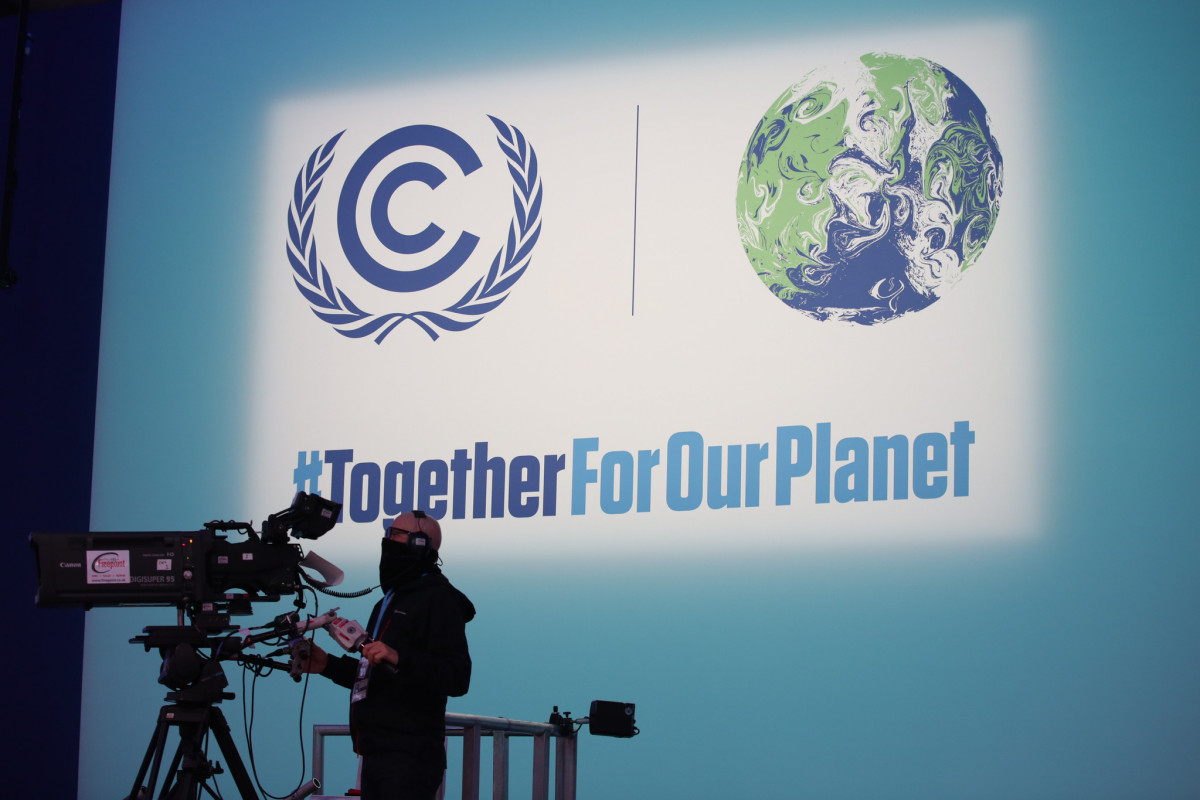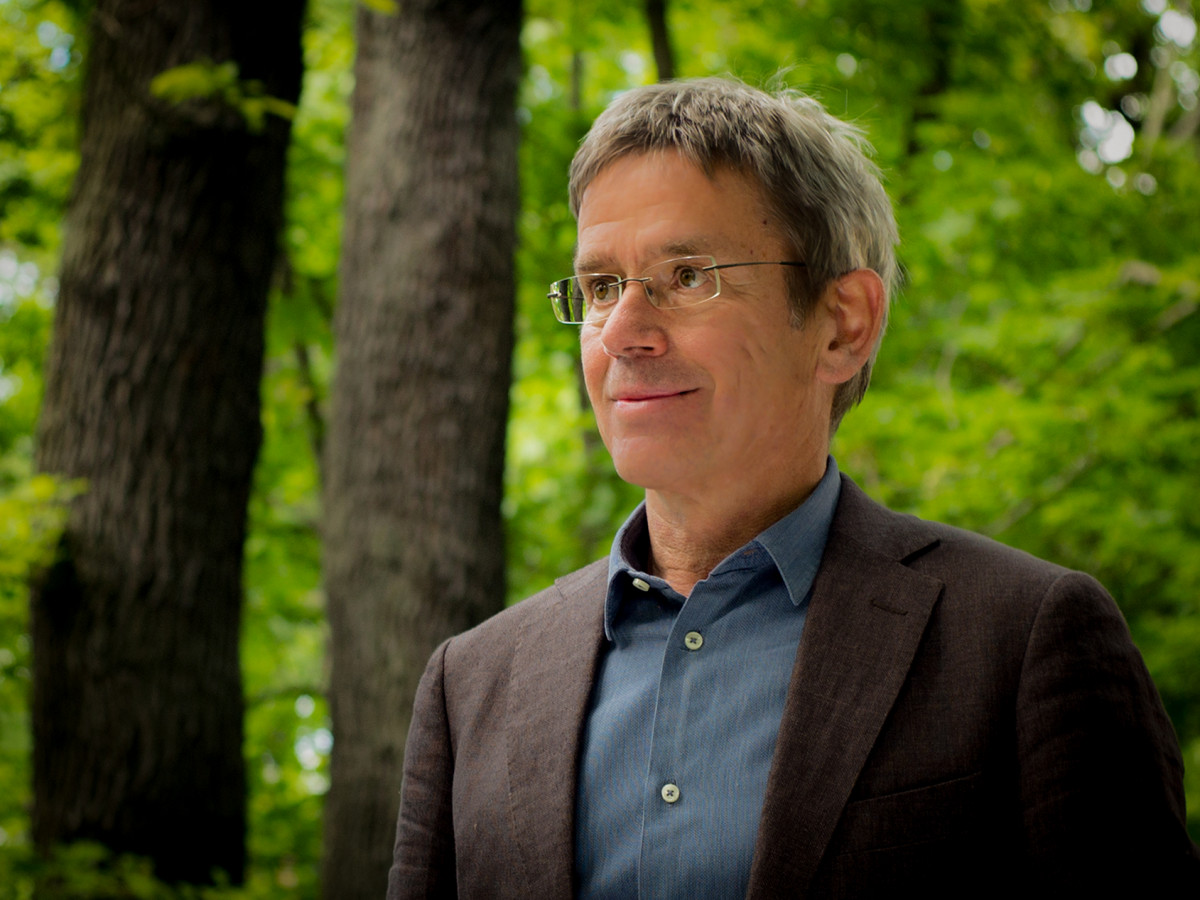COP26 can put “moral pressure” on govts to reduce emissions – climate scientist
Clean Energy Wire: The COP26 climate conference in Glasgow has just started. Do you see summits like these as the right format to bring about the change needed to reach the goals of the Paris Agreement?
Stefan Rahmstorf: These conferences are necessary and they serve a very useful purpose: putting a certain amount of public pressure on governments, which have to put their cards on the table and show what they are doing in terms of climate policy. We have no world government; the United Nations cannot force any government to do anything. Climate action is voluntary, so the mechanisms that put moral pressure on governments to reduce emissions are important. It is equally important that the people go to the streets and demonstrate like we do in Germany and worldwide with groups such as Fridays for Future and Scientists for Future in order to remind governments of their obligations to the people. When you look at opinion polls, you see that people want climate protection, but there are interest groups or lobby groups which are preventing it. So we the people have to put pressure on our own governments to fulfil the targets of the Paris climate agreement.
The overarching goal of the COP26 is to “keep 1.5 alive” and the latest IPCC report has underlined the importance of limiting global warming to 1.5 degrees. Do you believe that 1.5-degree warming is still reachable?
From a physics point of view: yes. Some people think we have already loaded the atmosphere with so many greenhouse gases that we will automatically reach that limit – even when we don’t emit any more greenhouse gases – but that's not what the science says. It is most likely that the global temperature will remain more or less stable once we reach net zero emissions worldwide. If we hit the brakes fast enough, we can do that before we reach a global temperature of 1.5 degrees. Cutting global emissions by half by 2030 would put us on the right track to stay below 1.5 degrees.
And then continue to get to zero by 2050…
I think 2050 is too late. If you look at those 2050 net zero scenarios, you see that they include a lot of negative emissions. In doing so, they basically condemn future generations to try and actively remove CO2 out of the atmosphere. In a court case earlier this year, ruling that the government’s key climate legislation fell short, the highest court essentially said that this kind of reasoning is unconstitutional: we cannot tell our kids and grandchildren to clean up the mess that we're leaving behind. Even if we did, we could not even tell them how they could possibly do that, because we don't have real technologies that can remove CO2 on such a vast scale as would be necessary.
So you would advise against relying on carbon capture and storage (CCS) technologies?
Exactly. It would be irresponsible to build our climate policy now on the idea that in thirty or forty ears our children and grandchildren will clean everything up by actively removing CO2 from the atmosphere.
If you look at 2050 net zero scenarios, you see that they include a lot of negative emissions. In doing so, they basically condemn future generations to try and actively remove CO2 out of the atmosphere.
You have called for the implementation of a national CO2 emissions budget. What would be a fair contribution of Germany to global climate action? How should the next government tackle this question?
The idea of an emission budget is quite an old one and it's based on the scientific fact that the cumulative emissions for CO2 count, because CO2, unlike other gases, stays in the atmosphere. If you want to stop the warming at a certain level no matter whether it's 1.5 or 2 degrees or even 4 degrees, it means you can only emit a limited amount of CO2 and that's the emissions budget. That holds for the world as a whole; how you split that up between different countries is a question of climate justice and that's not for us natural scientist to decide. In a recent report from the environment advisory council to the German government, a calculation showed that, if we simply distribute the budget globally per capita, we have about 10 years’ worth of budget left at current emission levels until we run out. So we have to fully hit the brakes there. Of course, it is debatable whether this per capita distribution is fair. Most developing countries would say no, because the wealthy industrial nations have vastly overspent the budget in the past. They have contributed far more than anybody else to the CO2 problem and so they should actually have less of the remaining budget now, which is a fair enough point. So this budget that the environment council of Germany calculated is like an upper limit – but the current German plans for emission reductions would emit about twice as much as that. Germany alone would of course not be able to manage to stay within that emissions budget, so we have to seek cooperation with other countries, for example within the EU. The European Green Deal with its 55% reduction goal by 2030 offers quite a feasible “budget” on per capita basis that is compatible with around 1.7 or 1.8-degree warming.
Would you like to see the new government putting a national CO2 budget into practice?
The CO2 budget is a kind of a yardstick to measure how sufficient or insufficient your climate policy is. We certainly need a path for lowering the emissions but then you have to sum up over that path and look at the total that comes out. If it is per capita twice as much as the rest of the world can emit that is kind of unfair. I think it is useful to compare your efforts with some kind of budget calculation and you may then want to collaborate with others that might not use their full budget. There are a lot of poor countries that have very low per capita emissions and they could easily have permissions budget to spare on that per capita basis. You could start a collaboration with one of these countries and say we help you with a transition to clean technologies and also adaptation to climate impacts, which threaten the livelihoods in many developing nations, and in exchange you allow us to have some of your emissions budget. But I think we need to openly discuss that rather than ignore the fact that there is a limited budget as the government in the past has been doing.
Would you say that the pandemic also offered some lessons in how to handle the climate crisis better?
The pandemic has brought one big lesson which is that we are not invulnerable. People like me, who spent their whole life in stable political conditions and wealth with no real existential problems have this delusion that nothing can happen to us. But that is not true. I think the Covid pandemic showed that even in the rich countries, we can be affected by massive crisis. It showed also that everybody staying at home has only reduced emissions by a few percent: we see that it is not individual changes in behaviour that can solve this crisis. It has to be a transformation of the energy system. The most important thing we can do towards that is vote for climate protection, talk to others about it, and take to the streets to demonstrate.



